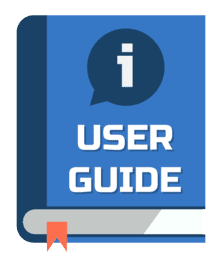Kesiapan Indonesia Menuju Agile Governance
Abstract
Dalam era disrupsi yang terjadi saat ini, daya saing memegang peranan penting untuk melakukan pembangunan yang berkelanjutan dan mempertahankan eksistensi organisasi. Oleh karena itu diperlukan tata kelola pemerintahan yang gesit (agile governance) sehingga mampu membuat kinerja organisasi menjadi yang lebih cepat, tepat, akurat, produktif dan efisien. Keinginan Presiden Joko Widodo untuk mereformasi birokrasi menjadi lebih agile menjadi pertanyaan mengenai kesiapan pemerintah untuk mengimplementasikan praktek agile governance. Studi ini dilakukan melalui pendekatan kualitatif dengan metode studi pustaka. Sumber data yang digunakan adalah sumber data sekunder. Hasil kajian menunjukan bahwa Indeks Pembangunan Teknologi Informasi dan Komunikasi di Indonesia masih tertinggal dibanding negara-negara lain di kawasan ASEAN. Perlunya perbaikan diberbagai sektor pembangunan TIK menjadi tantangan tersendiri bagi pemerintah sebelum mampu menerapkan agile governance.
Keywords
Full Text:
PDFReferences
Badan Pusat Statistik. 2019. Laporan Bulanan Data Sosial Ekonomi.Jakarta.
Bloom, A. (1991). The Republic of Plato. (A. Bloom, Ed.) (2nd ed., p. 509). Harper Collins Publishers.
Bradley, R.V., Pratt, R.M.E., Byrd, T.A., Outlay, C.N., Wynn, D., 2012. Enterprise architecture, IT effectiveness, and the mediating role of IT alignment in U.S. hospitals. Inform. Syst. J. 22 (2), 97–127.
Holmqvist, M., Pessi, K., 2006. Agility through scenario development and continuous implementation: a global aftermarket logistics case. Eur. J. Inform. Syst. 15 (2), 146–158.
Huang, P.Y., Pan, S.L., Ouyang, T.H., 2014. Developing information processing capability for operational agility: implications from a Chinese manufacturer. Eur. J. Inform. Syst. 23 (4), 462–480.
Janssen, M., & Estevez, E. (2013). Lean government and platform based governance—Doing more with less. Government Information Quarterly, 30, S1–S8. doi:10.1016/j.giq.2012.11.003
Kozlowski, S. W. J., Watola, D. J., Nowakowski, J. M., Kim, B. H., & Botero, I. C. 2009. Developing adaptive teams: A theory of dynamic team leadership. In E. Salas, G. F. Goodwin, & C. S. Burke (Eds.), Team effectiveness in complex organizations: Cross disciplinary perspectives and approaches (SIOP Frontier Series): 113-155. Mahwah, NJ: Lawrence Erlbaum.
Liang, H., Wang, N., Xue, Y., Ge, S., 2017. Unraveling the alignment paradox: how does business-IT alignment shape organizational agility? Inform. Syst. Res. 1–17.
Leicester, Graham. 2019. Lessons from Singapore: Agile Government in a Small Country. http://www.internationalfuturesforum.com/s/agile-governmen
Luna, A. J. H. de O., Kruchten, P., & Moura, H. P. de. (2015). Agile Governance Theory: conceptual development. In D. M. G. Sakata (Ed.), 12th International Conference on Management of Technology and Information Systems. São Paulo: FEA-USP.
Luna, A. J. H. de O., Kruchten, P., Pedrosa, M. L. G. E., Almeida Neto, H. R. de, & Moura, H. P. de. (2014). State of the Art of Agile Governance: A Systematic Review. International Journal of Computer Science & Information Technology (IJCSIT), 6(5), 121 141. doi:10.5121/ijcsit.2014.6510
Lusch, R. F., Vargo, S. L., & Tanniru, M. (2009). Service, value networks and learning. Journal of the Academy of Marketing Science, 38(1), 19-31. doi:10.1007/s11747-008-0131-z
Ngai, E.W.T., Chau, D.C.K., Chan, T.L.A., 2011. Information technology, operational, and management competencies for supply chain agility: findings from case studies. J. Strateg. Inform. Syst. 20 (3), 232–249.
Tiwana, A., Konsynski, B., 2010. Complementarities between organizational IT architecture and governance structure. Inform. Syst. Res. 21 (2), 288–304.
Refbacks
- There are currently no refbacks.
@2017-2024
Jl. Hayam Wuruk No. 34-38 Bandung
Politeknik STIA LAN Bandung
Powered by OJS (Open Jounal Systems)


